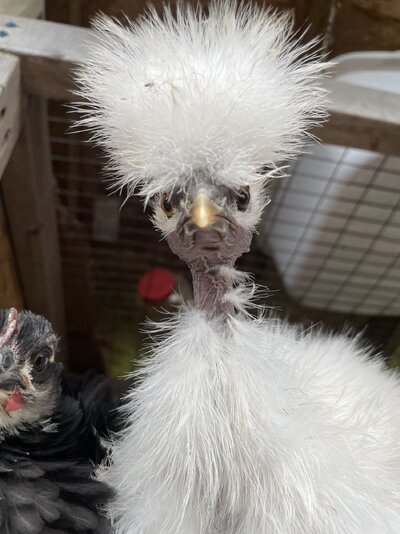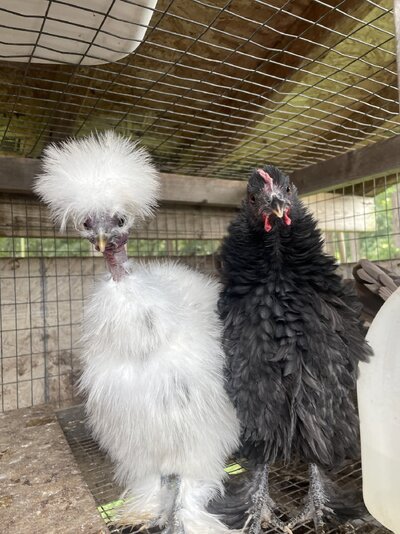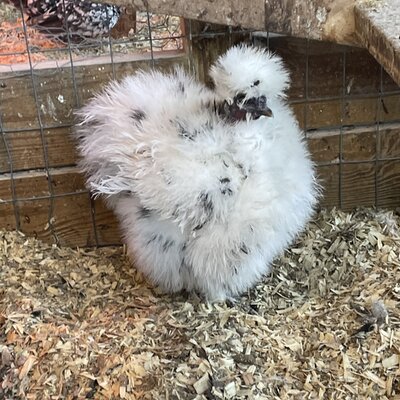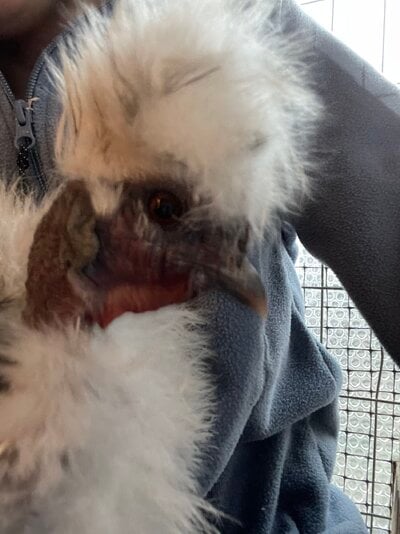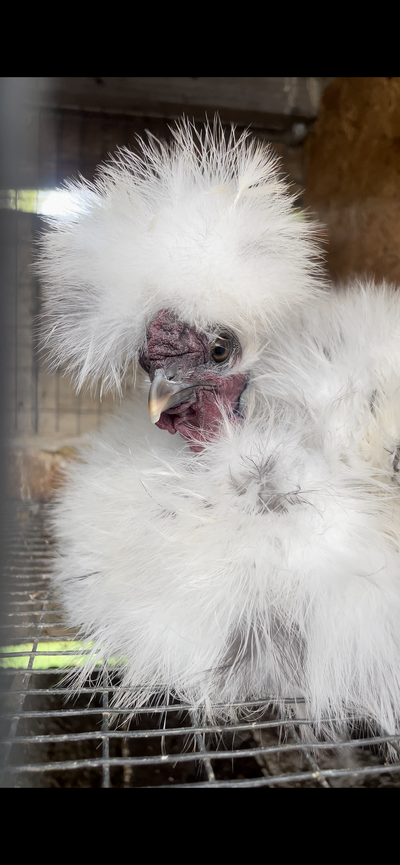LoveOfFeathers
Songster
I have this chick that came from a paint and black pair. I know it’s partridge colored. I’ve seen something about dominant white gene having mutations. So both my paint and my black have carry the eb (partridge) gene. Cock is Black but Carries both silver and gold. Hen is paint? This chick looks grey? Blue? Is this Smokey? Chick has light skin and eyes, slate legs with pink soles on feet and tan toenails. I’ll post pictures of parents and the chick in question.
Attached link so pictures are easier to see. Should’ve posted here first. https://www.backyardchickens.com/threads/silkies-they’re-simply-spectacular.1334299/post-27442806
.View attachment 3730694
Hen is on the left. On the right is a dominant white polish paint for color comparison.
View attachment 3730697
No idea what’s stuck to the rooster’s face
View attachment 3730696
Hen
View attachment 3730702
Hen’s feathers up close View attachment 3730698
Rooster top right ( black one) Hen at bottom of photo.
View attachment 3730704
Rooster carries both silver and gene shown in his hackles.
Chick pictures
View attachment 3730712 View attachment 3730705View attachment 3730706View attachment 3730709View attachment 3730710View attachment 3730711
Butt fluff and bottom of feet
View attachment 3730712
View attachment 3730713View attachment 3730714View attachment 3730715
Showing down feathers
View attachment 3730716
FeetView attachment 3730718
Weird toenail color
Chick photoView attachment 3730734
Full Paint sibling: feathers up close
View attachment 3730721
View attachment 3730722
View attachment 3730723
Attached link so pictures are easier to see. Should’ve posted here first. https://www.backyardchickens.com/threads/silkies-they’re-simply-spectacular.1334299/post-27442806
.View attachment 3730694
Hen is on the left. On the right is a dominant white polish paint for color comparison.
View attachment 3730697
No idea what’s stuck to the rooster’s face
View attachment 3730696
Hen
View attachment 3730702
Hen’s feathers up close View attachment 3730698
Rooster top right ( black one) Hen at bottom of photo.
View attachment 3730704
Rooster carries both silver and gene shown in his hackles.
Chick pictures
View attachment 3730712 View attachment 3730705View attachment 3730706View attachment 3730709View attachment 3730710View attachment 3730711
Butt fluff and bottom of feet
View attachment 3730712
View attachment 3730713View attachment 3730714View attachment 3730715
Showing down feathers
View attachment 3730716
FeetView attachment 3730718
Weird toenail color
Chick photoView attachment 3730734
Full Paint sibling: feathers up close
View attachment 3730721
View attachment 3730722
View attachment 3730723
Last edited:



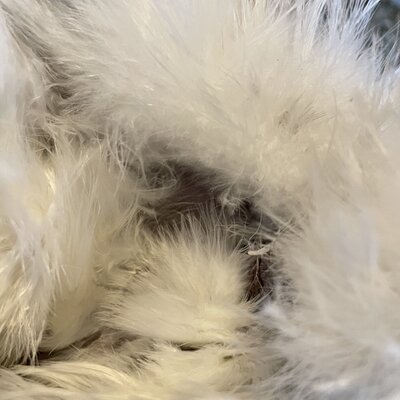
 The one center-right and the one at the lower right are the only Black ones in the picture.
The one center-right and the one at the lower right are the only Black ones in the picture.
